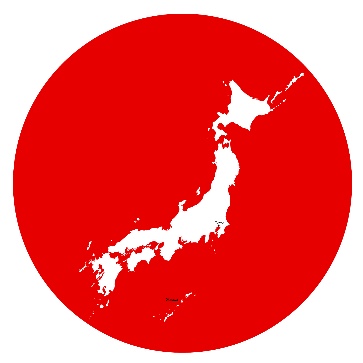 RFClipart.com
RFClipart.com
Japan Looks East: The Growing Importance of North American LNG
While natural gas has recently grabbed headlines as winter approached in Ukraine, scant attention has been paid to one of its major consumers: Japan. Japan is an island archipelago devoid of indigenous natural resources. The Fukushima nuclear disaster in 2011 virtually eliminated Japan’s nuclear energy production and consumption, posing a dire threat to a country almost entirely dependent on foreign energy sources for survival. So far, Japan’s solution has been twofold: boosting natural gas in energy mix with imported LNG to meet immediate needs while planning and developing renewable energy for a long-term strategy. Against this backdrop, Japan is increasingly interested in importing North American LNG as the country’s gas demand soars. The U.S. in particular will be in a strong position to leverage its burgeoning natural gas industry.
LNG carries central importance for Tokyo’s emerging energy strategy. Post-Fukushima Japan has been boosting LNG imports to reduce its reliance on oil whose high prices have been eroding its economy, leading to serious trade deficits and weakening of yen. Although the recent decline in oil prices has somewhat reduced this burden, the weak yen minimizes any potential benefits. Moreover geopolitical risks endemic to Japan’s most major oil suppliers, such as the Middle East and Russia, question the sustainability of continued reliance on oil. Cheaper than oil on an energy-equivalent basis, LNG has thus emerged as an attractive alternative to address Japan’s energy crisis. Indeed, LNG rose by 14% in Japan’s electricity generation mix between 2010 and 2013 while oil and other fuel gas did only by 7%.
Japan is desperately in search for LNG suppliers to fuel its voracious appetite for energy. Japan has already become the world’s largest consumer of LNG, accounting for 37% of global consumption in 2012. LNG is now increasingly being used to fuel Japan’s enormous export-driven economy, further stimulating the country’s growing demand for the alternative energy source. To meet future demands, Japan has already started major investments, including the $17.6 billion purchase of additional 90 LNG tankers by 2020 by the nation’s top shippers, such as Mitsui O.S.K. Australia and Qatar are the country’s major suppliers, bringing 36% of its imports in 2012. However, their contracts index LNG to oil prices in addition to other restrictive conditions. Japan is therefore actively seeking new suppliers offering more favorable conditions.
Japan is increasingly looking east to North America to maximize its ongoing shale gas revolution. North America offers exactly what the Japanese need: affordability and contract flexibility. North American LNG is estimated to be $12 and is 30% lower than Japan’s current per-unit price of $16. This is particularly a good news for Japan as high LNG costs are a crucial factor behind its trade deficit. Moreover, North American LNG’s contract flexibility could potentially allow Japan to export surplus gas to other countries. Not only would this enable Japan to reduce its ballooning trade deficit, it could also lead the country to emerge as an Asian LNG hub, stabilizing the regional price.
Japan already has a solid strategy for North American LNG. Released in April 2014, the 4th Strategic Energy Plan (SEP) pays special attention to U.S. LNG’s potential for improving Japan’s energy security with its reliable supply route and low pricing. SEP also lays out an import strategy for North American LNG with which Japan seeks to diversity Asia’s LNG supply-demand structure. The Ministry of Economy, Trade, and Industry (METI) estimates 70% of its LNG to be sourced from North America and Australia by 2020. U.S. LNG will comprise 20% of the import, making the U.S. Japan’s second largest LNG source. Japan is expecting to import North American LNG after 2018 and plans to fund more than $10 billion in loans for the region’s key LNG projects. Cameron Project, Freeport, and Cove Point have already obtained approval for exports to Japan from the U.S. Energy Department. These three projects are slated to bring 15 million tons of LNG annually, approximately 20% of Japan’s import volume last year.
Nevertheless, challenges stand in the way of Japan’s optimism. Some new North American LNG export terminals currently proposed may never even be built. Complex regulations also abound. The issue of government approval may hinder U.S. LNG exports for countries without free trade agreements, including Japan. Apart from legislative issues, other obstacles, such as tax treatments, could persist as indicated by the Malaysian oil firm Petronas’ recent refusal to finalize a Canadian LNG project for up to 15 years. Moreover, significant opposition to U.S. LNG exports exists, impeding the country’s shale gas revolution on a global scale. These issues have created a sense of pessimism among some industry leaders in Japan, frustrating the country’s insatiable appetite for North American LNG.
Nevertheless, Japan’s growing interest and aggressive investment in North American LNG are driven largely by its concern for energy security. Absent domestic nuclear power generation, this trend will likely remain unchanged for decades. The greatest strengths of U.S. LNG are its affordability and contract flexibility. Unfettered American LNG exports to Japan would signal a U.S. gas pivot to Asia. It could open the door to other Asian customers, particularly China, whose natural gas consumption is expected to increase to 10% of total by 2020. Increased U.S. LNG exports to Asia would also undercut Russia’s growing natural gas dominance in the region.





